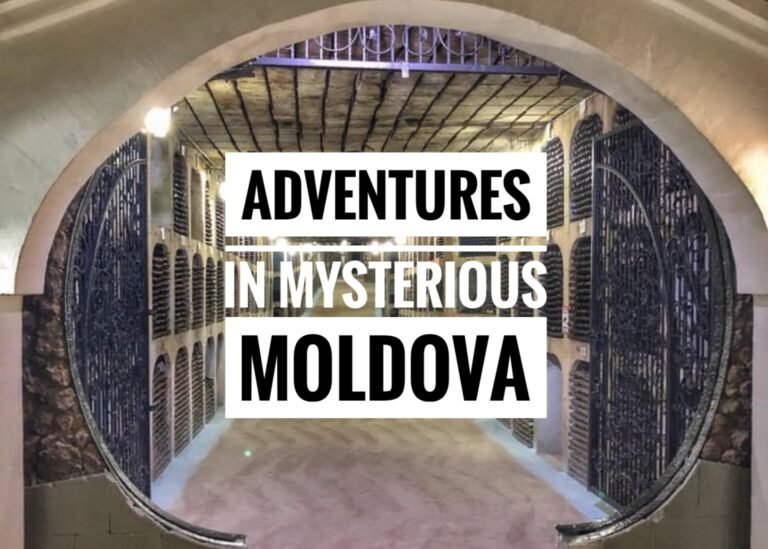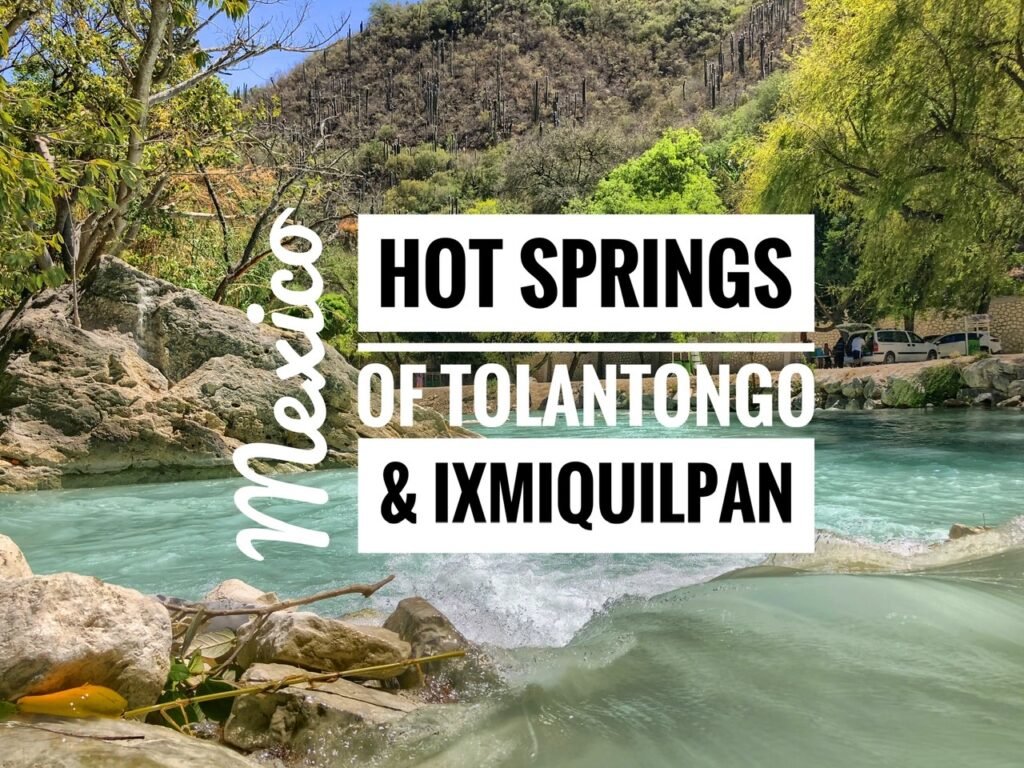
Tucked into the mountains of central Mexico, Las Grutas Tolantongo is an aquamarine hot springs Garden of Eden, which is arguably one of the most dynamic and entertaining natural thermal experiences we’ve ever dipped our toes in. The cliffside travertine pools reminded us a lot of Pamukkale (Turkey), except even more extraordinary because you could plop yourself down into the delightfully warm waters of any one of them. The park also features multiple hot springs waterfalls, a hot springs river (above), a 40-meter tunnel, a cave with a waterfall and regular swimming pools with water slides and diving boards. It’s a little off-the-beaten-path, but well worth the effort to get there.
It is about four hours north of Mexico City and 3 hours from Queretaro. To get there, we decided to stay in neighboring Ixmiquilpan for a couple nights, which was a great call, and then trust the shuttle bus to weave us up and down the mountains to the paradise that awaited. There is also an option to stay at the on-site hotels, but we read those rooms are first-come, first-serve, making them riskier and of course, substantially more expensive.
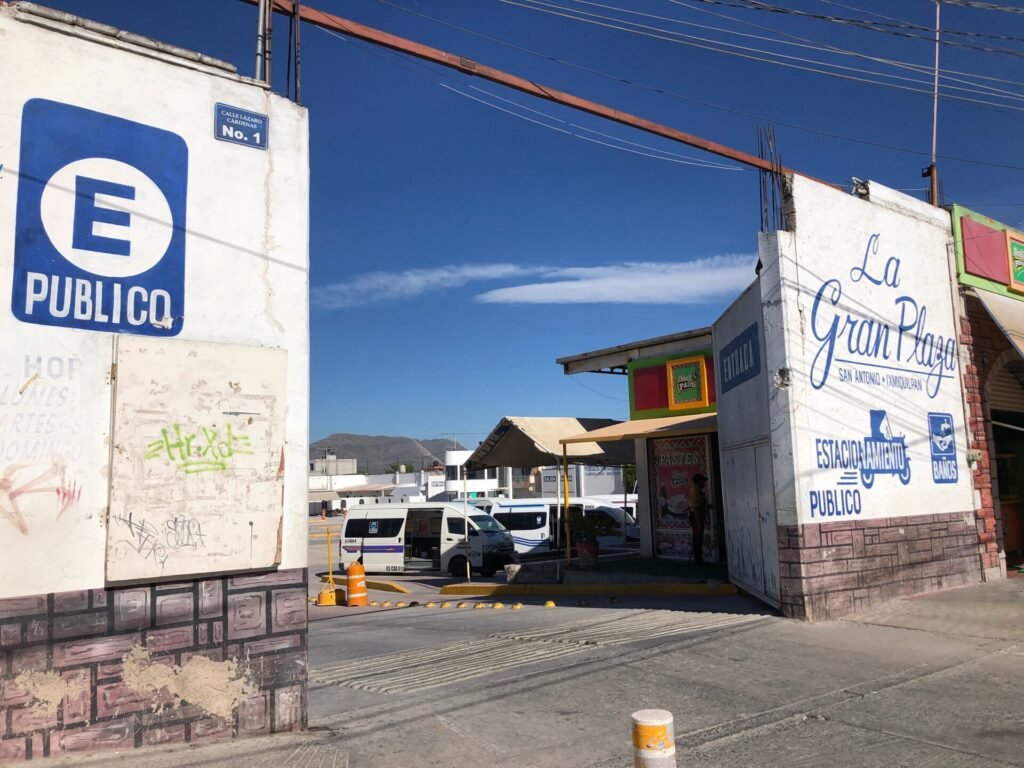
Getting to Las Grutas Tolantongo
To find the shuttle bus from Ixmiquilpan, go to Iglesia De San Antonio. From there walk about 100 meters north to find a large parking lot on the left. When you enter, veer right and you’ll see an waiting area under an awning that says “Tolantongo.”
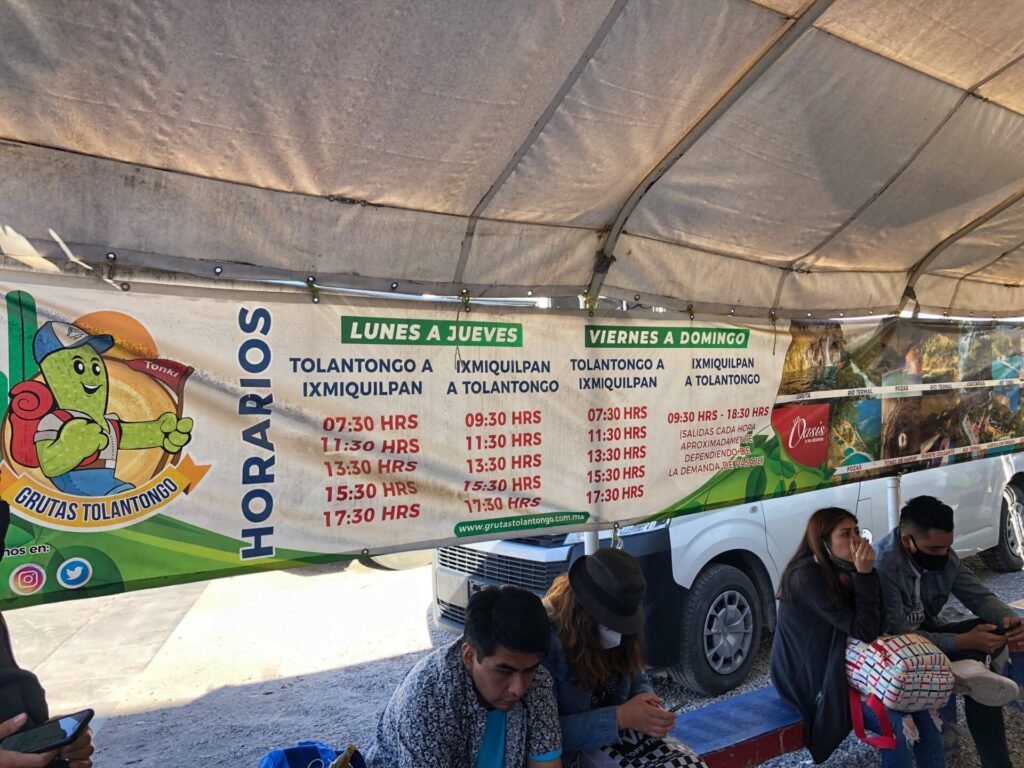
The first bus of the day leaves at 9:30, which in our opinion is a wee bit late, but so be it. Make sure to arrive early to grab a seat. Hairpin turns are way more perilous when you’re standing up. We know. Each ticket costs $50 pesos one way ($2.50.) One local couldn’t believe the “tourist” price. It is a bit steep for some when you compare the price of the park is $150 pesos. ($7.50) Here is the schedule. Make sure not to miss the last bus at 5:30 back to Ixmiquilpan or you’re SOL.
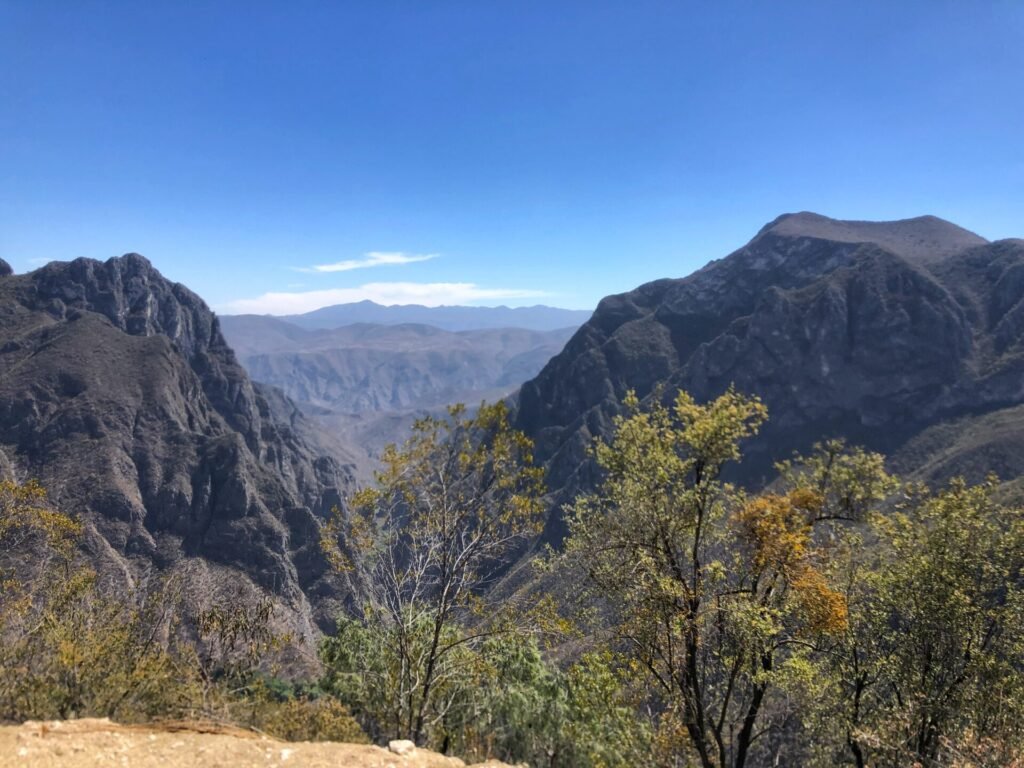
The road to get to Tolantongo was an enticing experience through the mountain vistas as well. The road is uneven, bouncy and will supply you with lots of hairpin turns as you roll your way through. Perhaps this would have bothered us long ago, but after some experiences in Ethiopia and Nepal, it felt like a cakewalk.

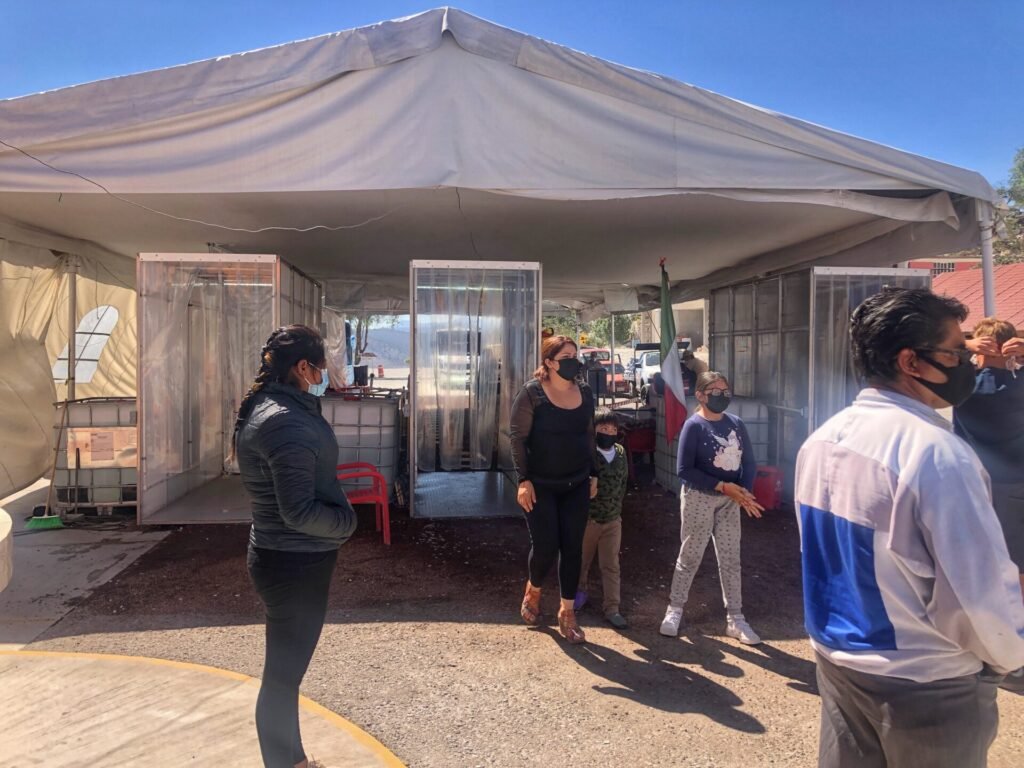
At the edge of the park, the bus pulls over and a new pandemic park feature now consists of temperature checks and a human car wash. They tell you (in rapid fire Spanish) to spin three times in the “sanitation station” while you get sprayed from head to toe with god knows what. You then get back on the bus, which men in hazmat suits have also sprayed down with god knows what. The smell was intoxicatingly potent. Lovely.
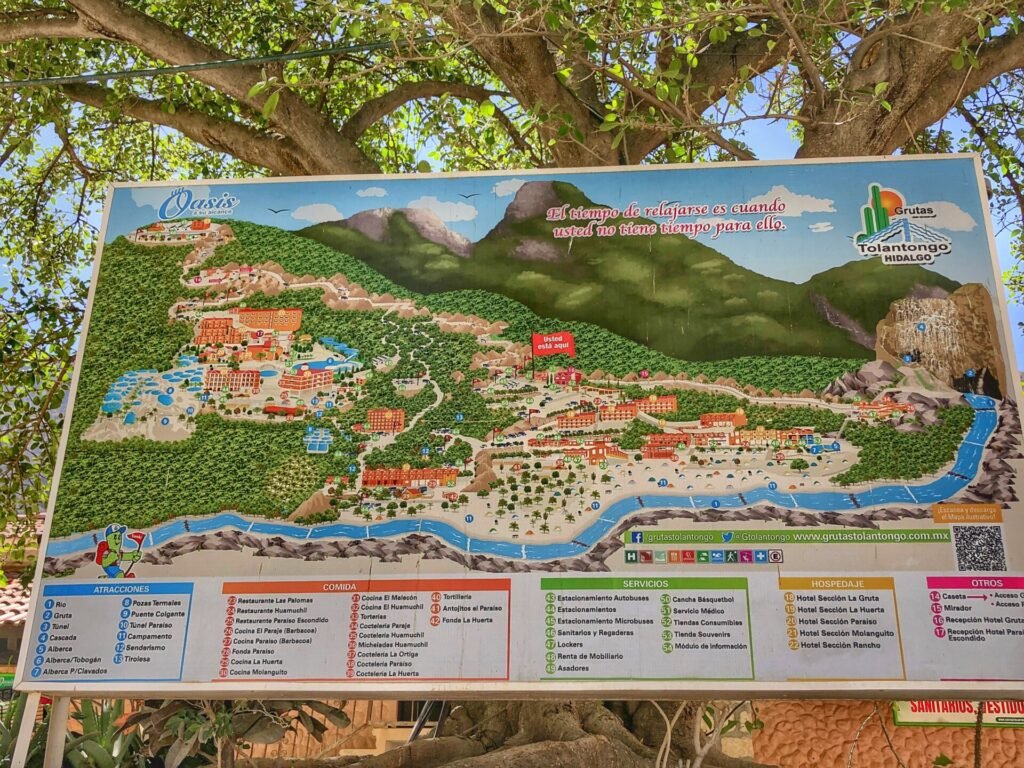
Moving along, you can get off at the first entrance for the travertine pools or continue on to the cave and tunnel. We were excited to get off the cancer caboose, so we opted for stop one. The map of the giant park, which in addition to the water features, is also full of hiking trails. Unfortunately we didn’t have enough time to explore them.
Las Grutas Tolantongo

Tolatongo comes from the indigenous Nahuatl word Tonaltonko (Home where it feels warm). To the point. We like it. In 1975 when this utopia was discovered, it was promoted incorrectly by the magazine “Mexico Desconocido.” The name was misspelled and that is how it “officially” got the name Tolantongo.” Above, one of the hot springs waterfalls, which comes out of the mountain and serves as the source for the river.
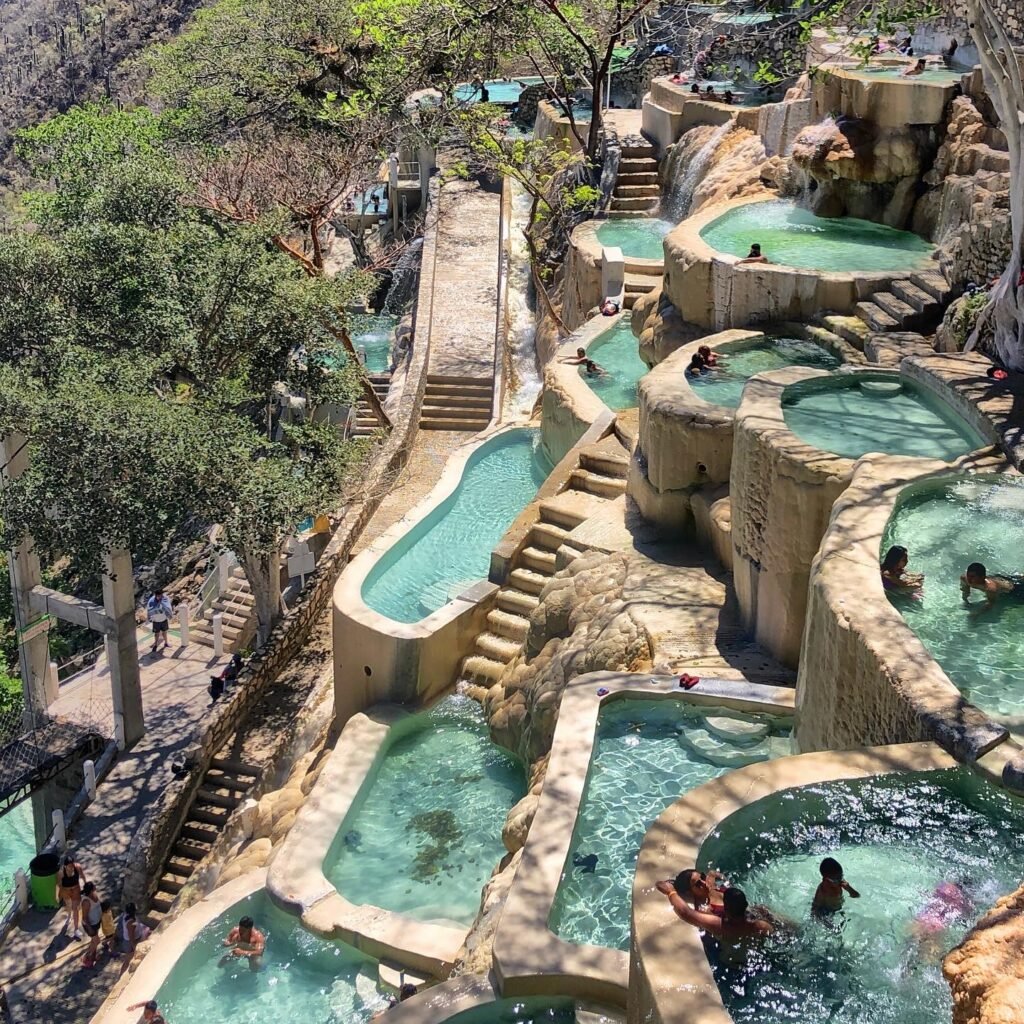
The resort itself is made up of three hotel complexes and heated pools near the bottom of a steep box canyon. It features multiple travertine pools (pictured), hot springs waterfalls, a hot springs river, a 40-meter tunnel, a cave with a waterfall and regular swimming pools with water slides and diving boards.
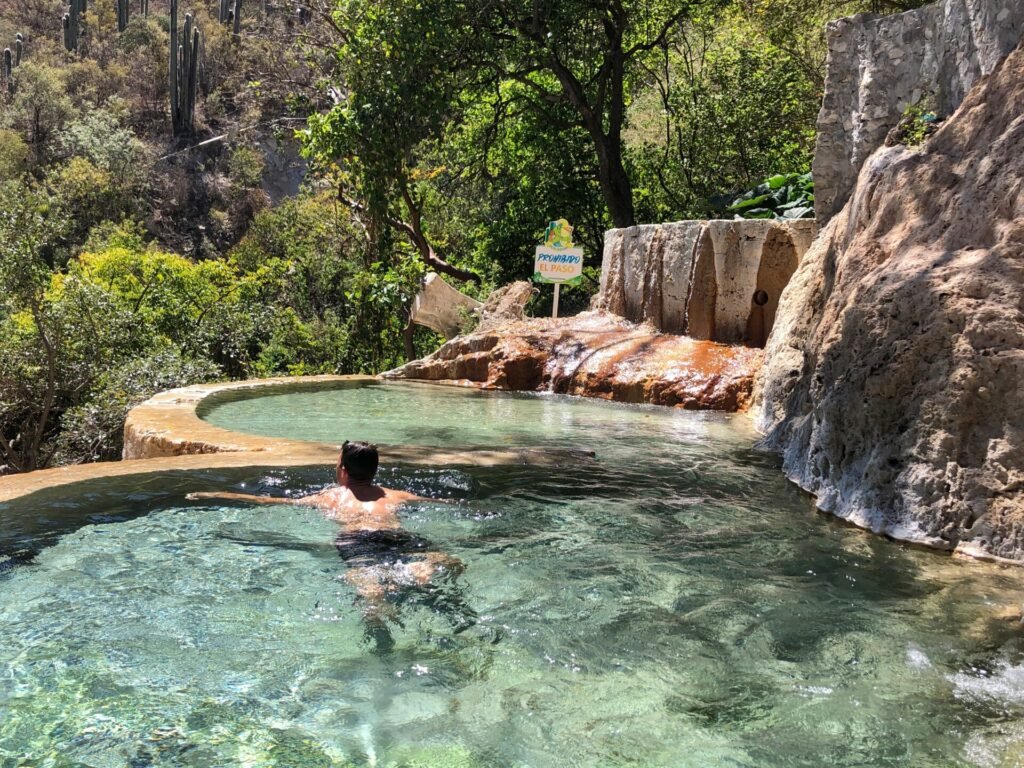
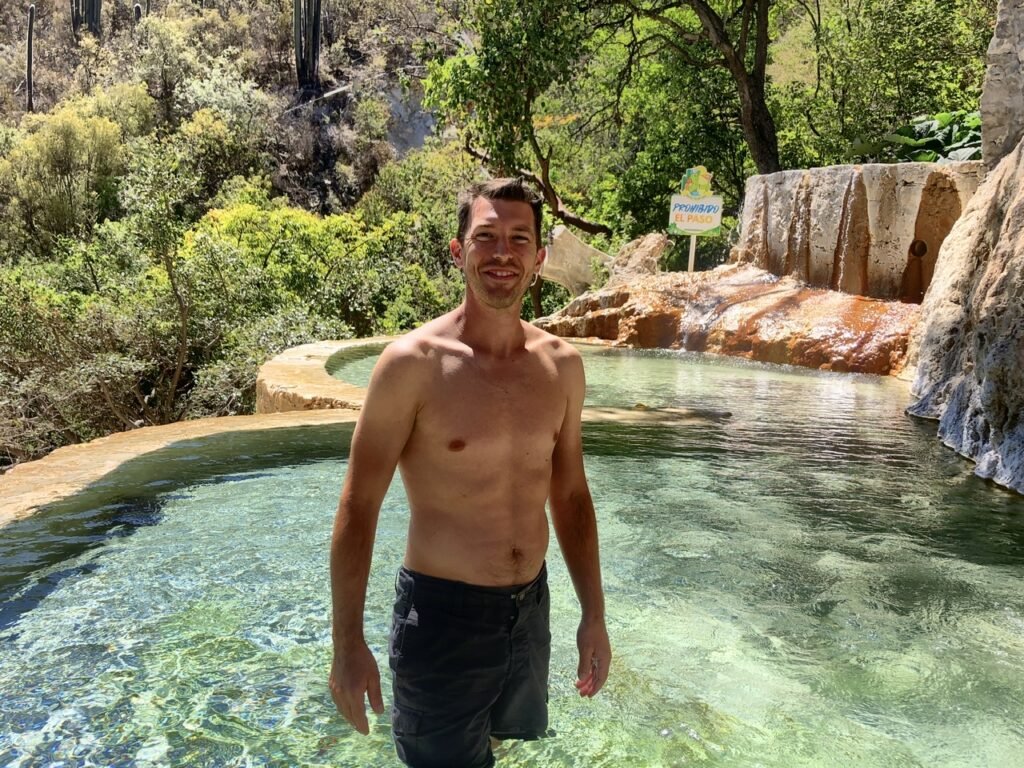
Snagging our own private pool. As you can see they’re not very deep, which makes them welcoming for all ages.
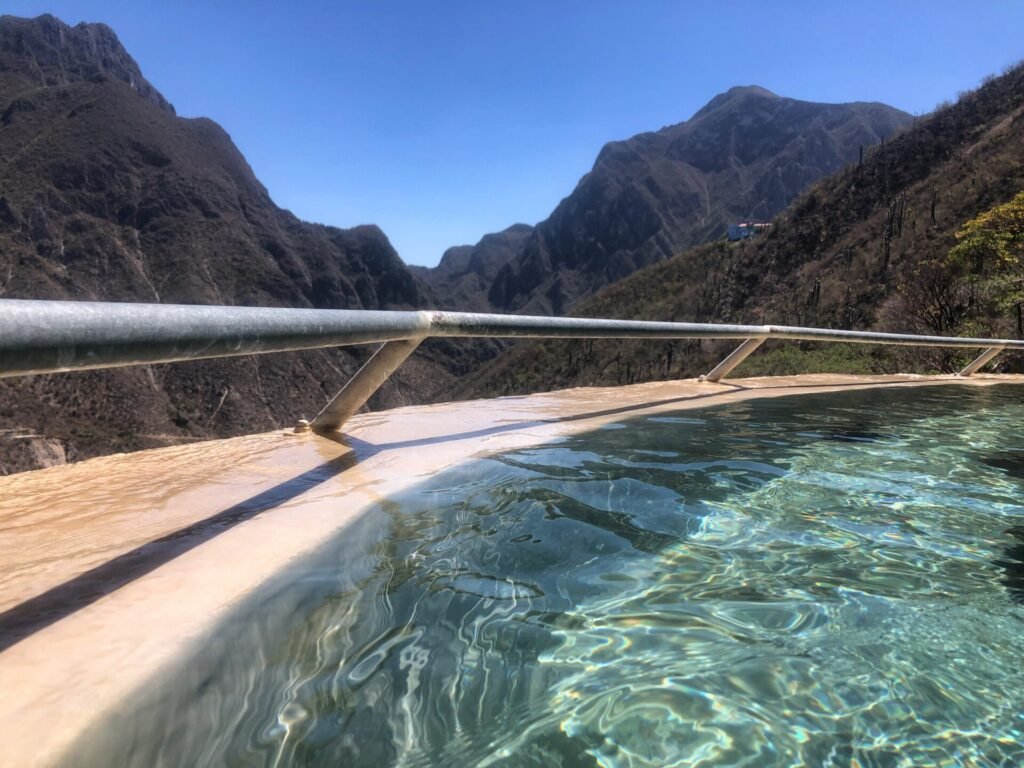

And the view! Wow! Yes, we could get used to this!
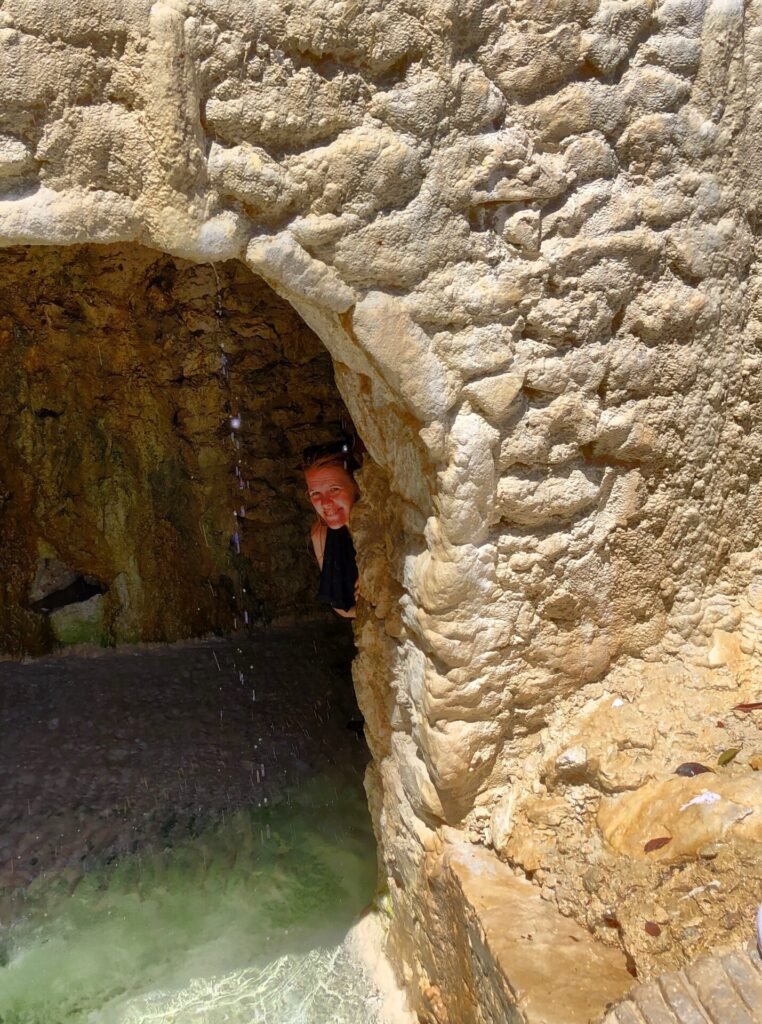

There are two sections of travertine pools. You can choose to traverse between the two of them through a water-filled tunnel, which you wade through.
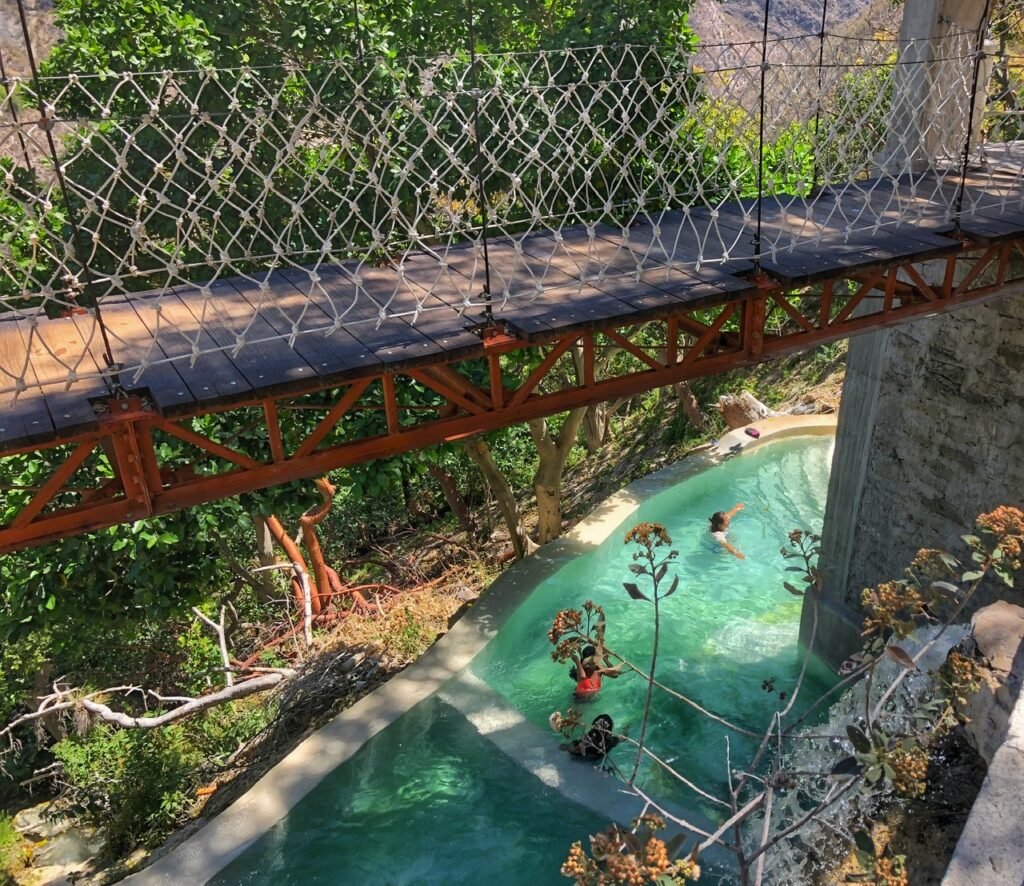
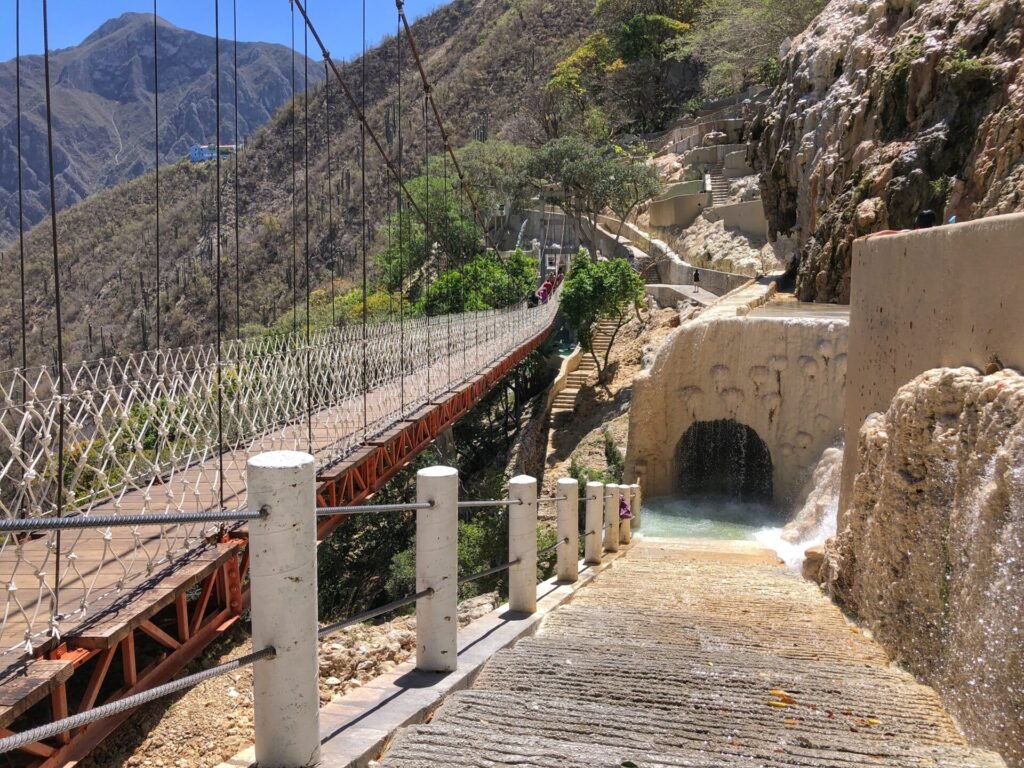
You can also walk to the other side across a Indiana Jones style swinging suspension bridge. Or, choose to have a soak underneath if you prefer.
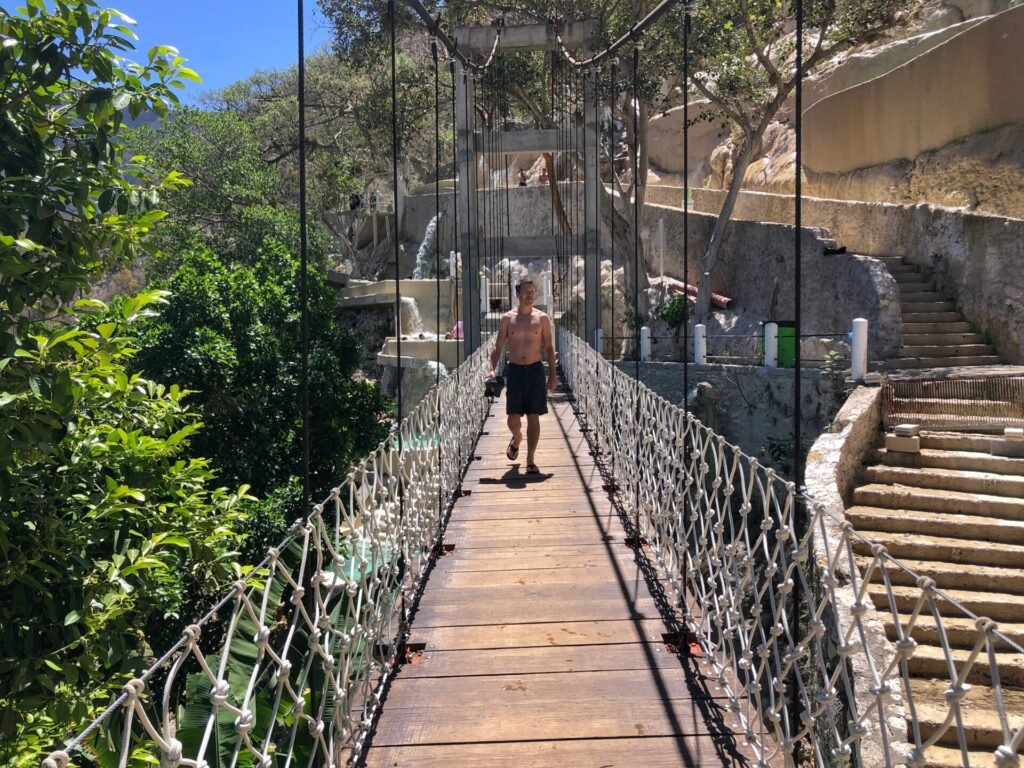
Greg on the bridge.

After this, we grabbed some lunch at one of the many restaurants, which was very affordable…$215 pesos ($10.40) for two enchilada meals, two Coronas and tip. (And yes, we’ve been risking drinking the Coronas ?.)
There are also two ways to get to the other side of the park. You can either take the walking path (a 30-45 minute walk), or the resort shuttle. We chose the walking path and we’re glad we did. We wouldn’t have stumbled upon these completely empty thermal pools if we hadn’t. Apparently, we read, they’re usually empty. So if you go on a really busy day and want some solitude, head here.
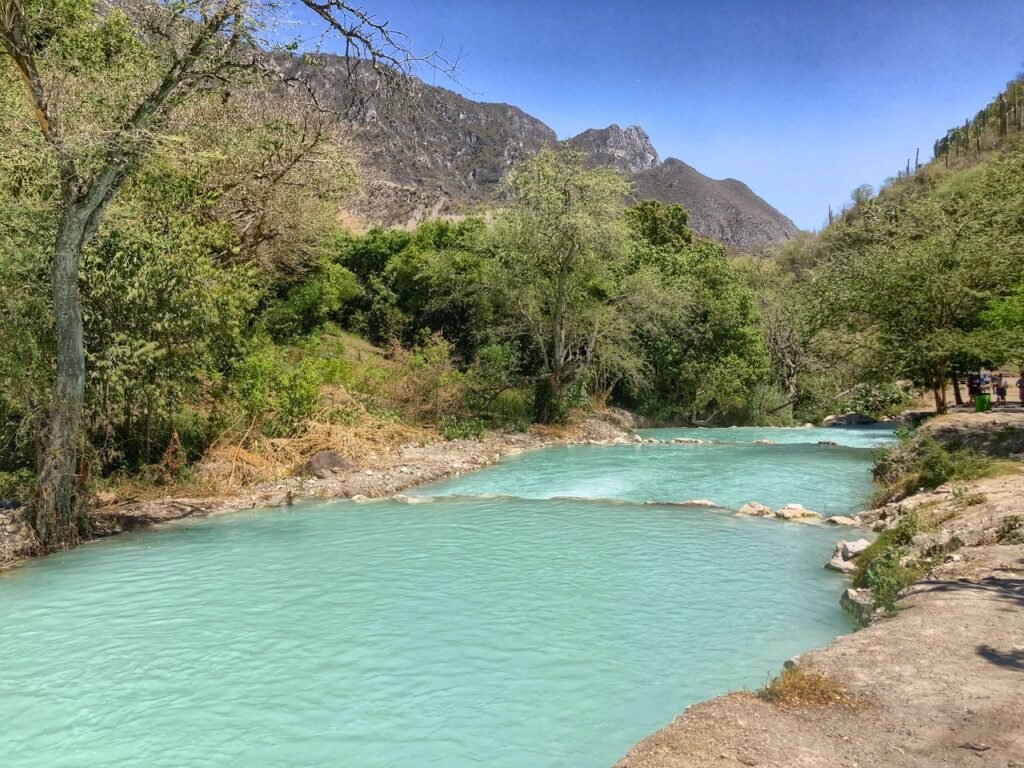
We’ve been in exactly one hot springs river before, and we had to hike to it in the pouring, freezing rain in Iceland. This one was significantly easier. Just hop on in to this deliciously warm water.
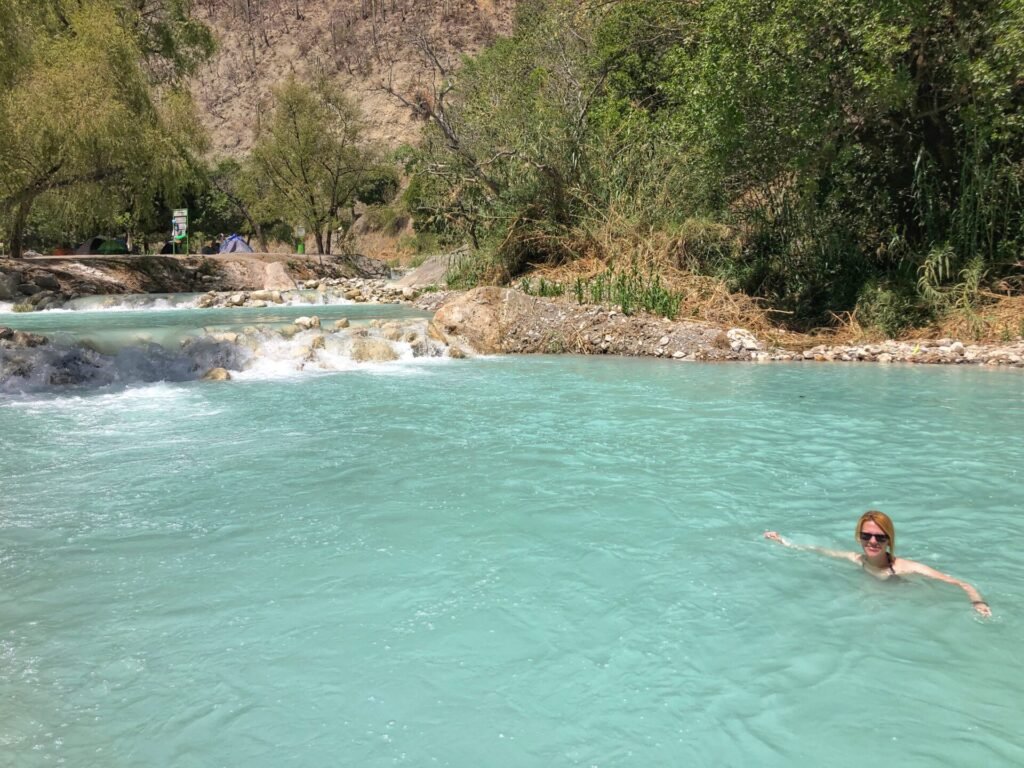
Nor, would we have gone to the much more serene part of the river, where we had a river pool all to ourselves.

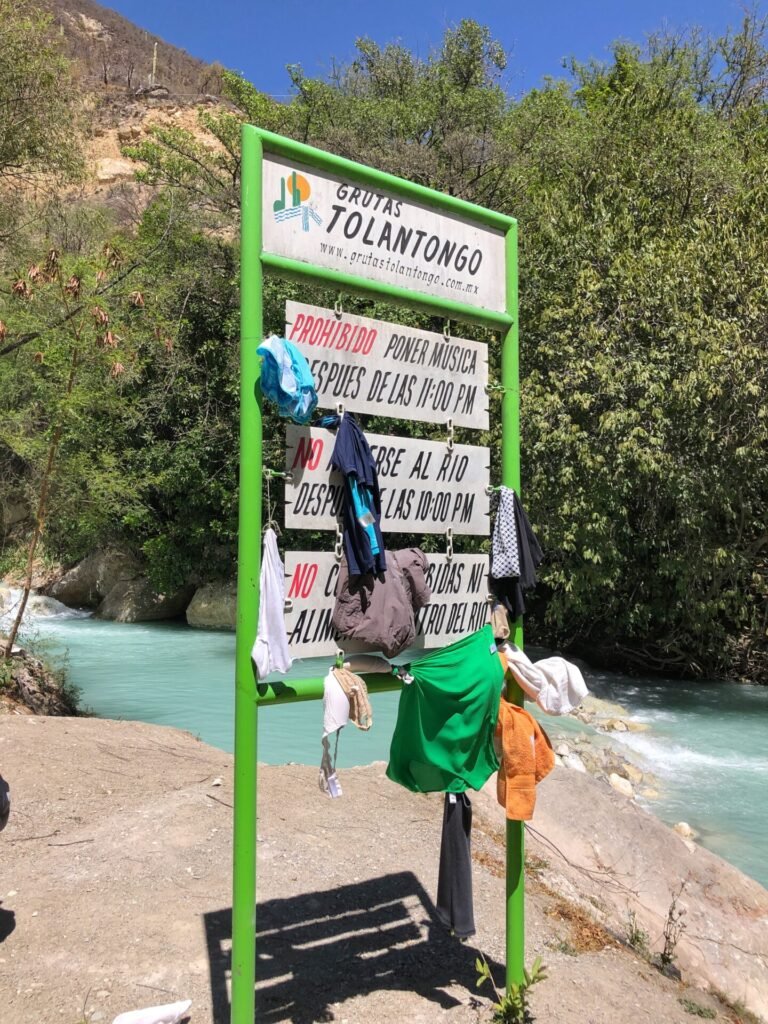
By the way, you can also camp anywhere along the river. If we come back, we know our plan! And clearly, lots of people choose to really embrace nature.
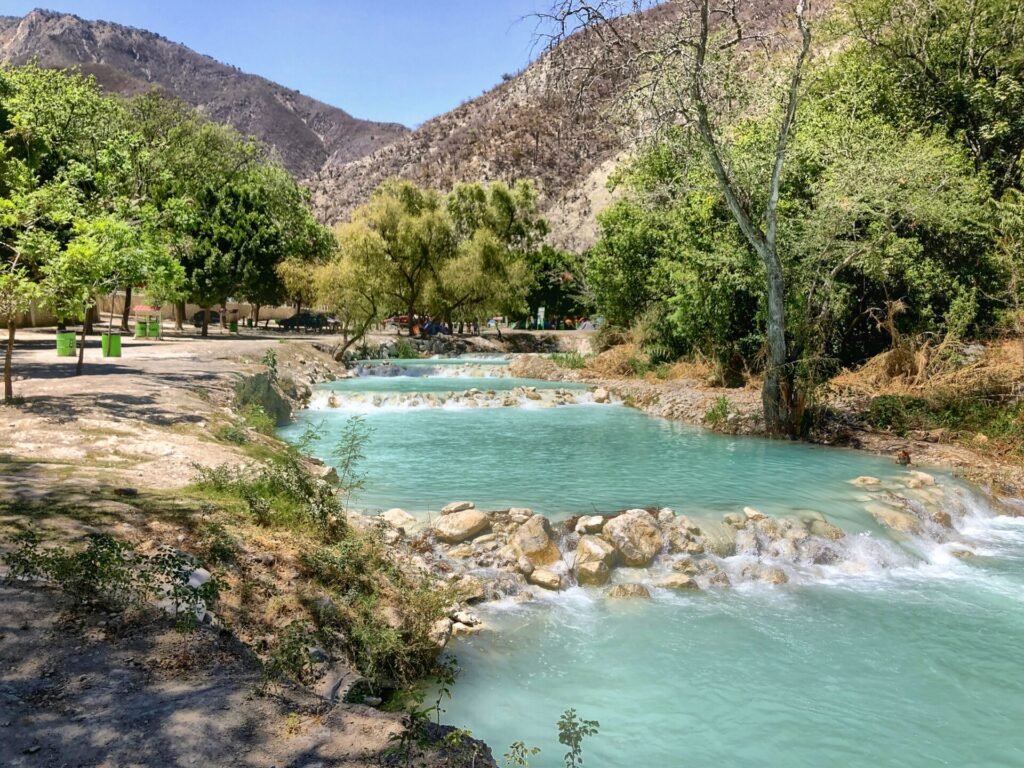
The water, which is only about four feet deep, plays tricks on you because in our minds, water that looks this stunningly beautiful, should be freezing glacier water. Thinking those thoughts, can’t even describe how divine it felt. There was a relatively strong current in places too, so it was really amusing (and hard) to swim to the edge of one waterfall and then let nature push you to the next.
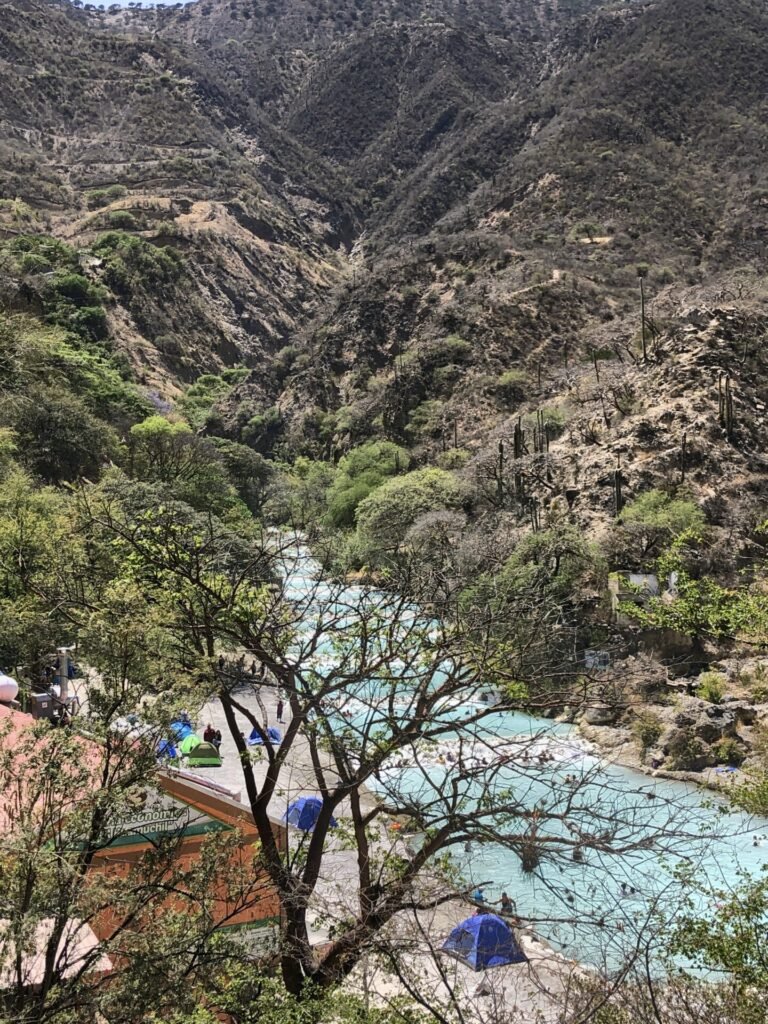
And the river snakes its way all the way from one end of the park to the other, and beyond.
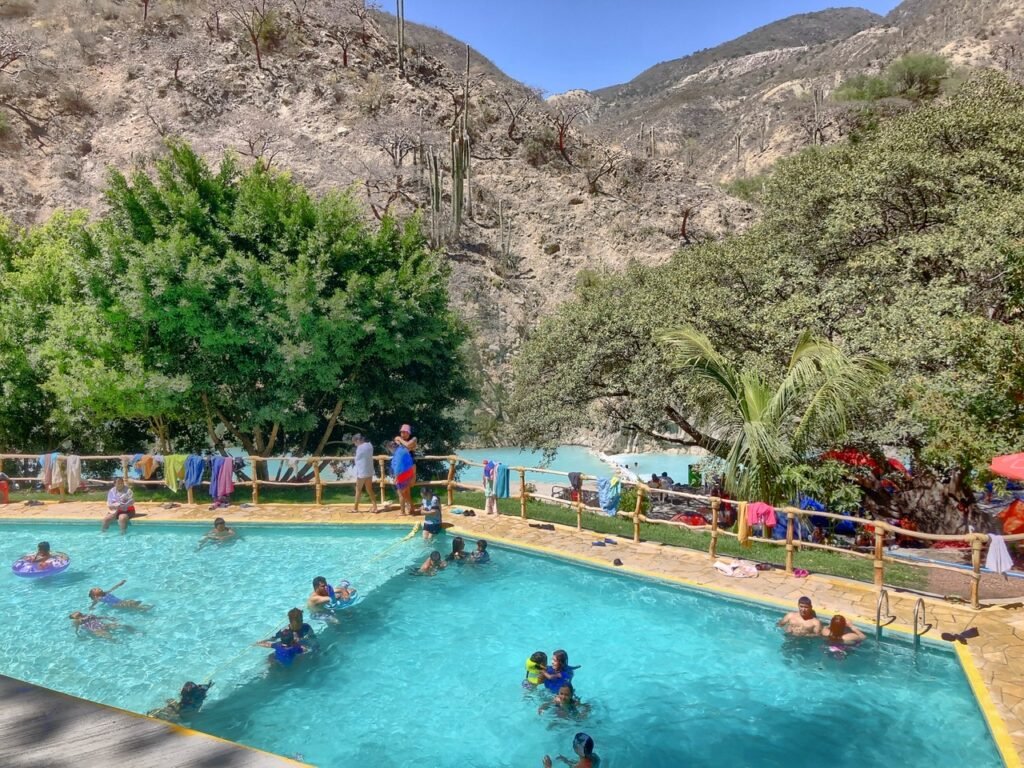
There is also an actual water park with swimming pools, water slides and diving boards. Every family’s dream. We’ll pass, thank you! Haha.

Unfortunately, you’re not allowed to take your bags to the cave area. So, we begrudgingly stored our stuff in locker that cost half the overall ticket price. Our minds were taken away from this when heading up to the cave, we met this guy, a coatimundi, which is a sun-loving day relative of the raccoon.

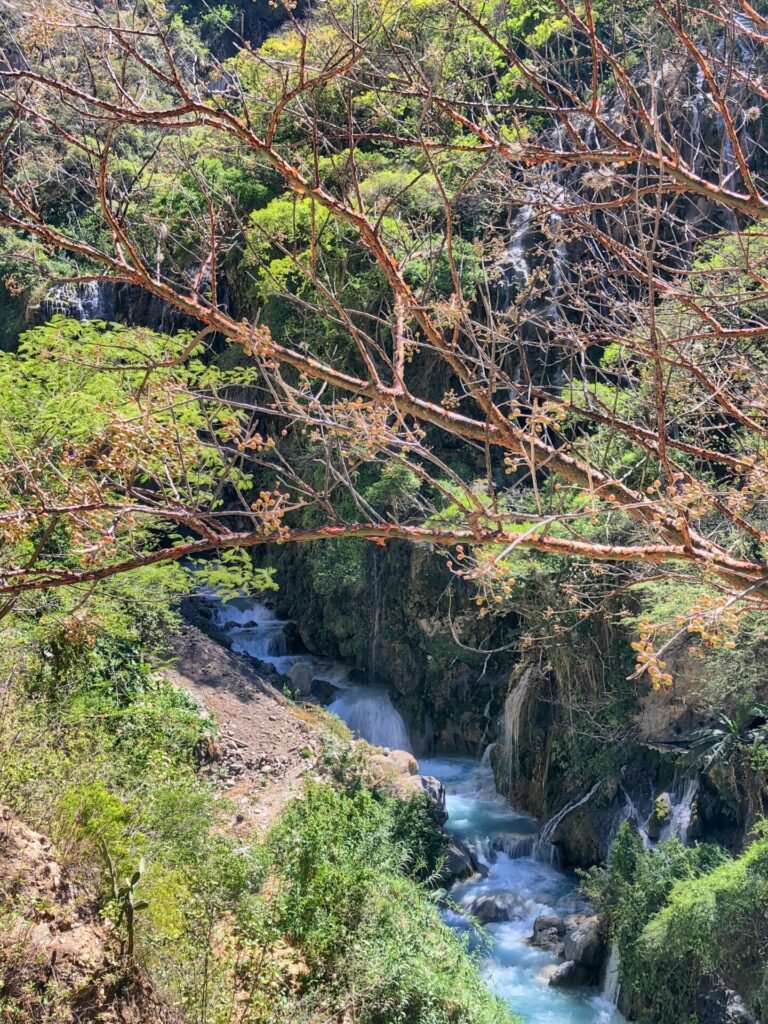
As if being dropped by angels, these heavenly waterfalls are made of trickling hot water. Wow, the Native Americans must have been enthralled by these gifts of nature. Can you imagine stumbling across this for the first time?!

At the cave entrance, you have to glide through one of the waterfalls to enter the cave pool. Utter bliss…
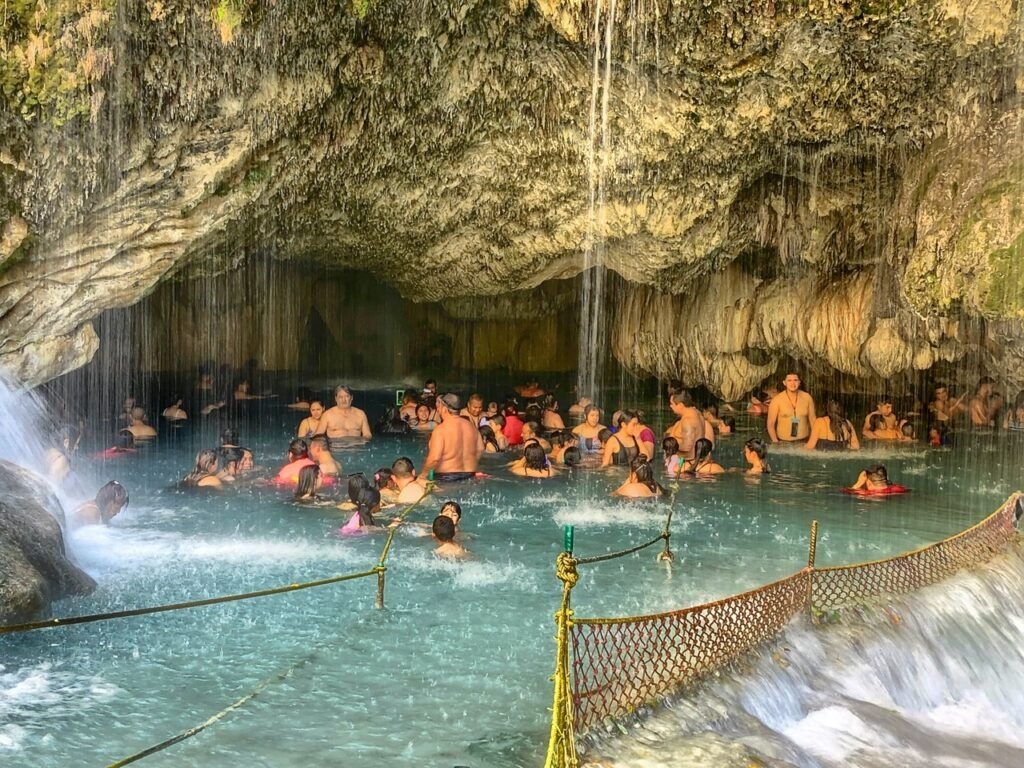
Uh. Maybe not. This looks like a nightmare on any day, much less during a pandemic sin masks. Not a problem. I’m sure the human car wash cleansed off all the COVID cooties.
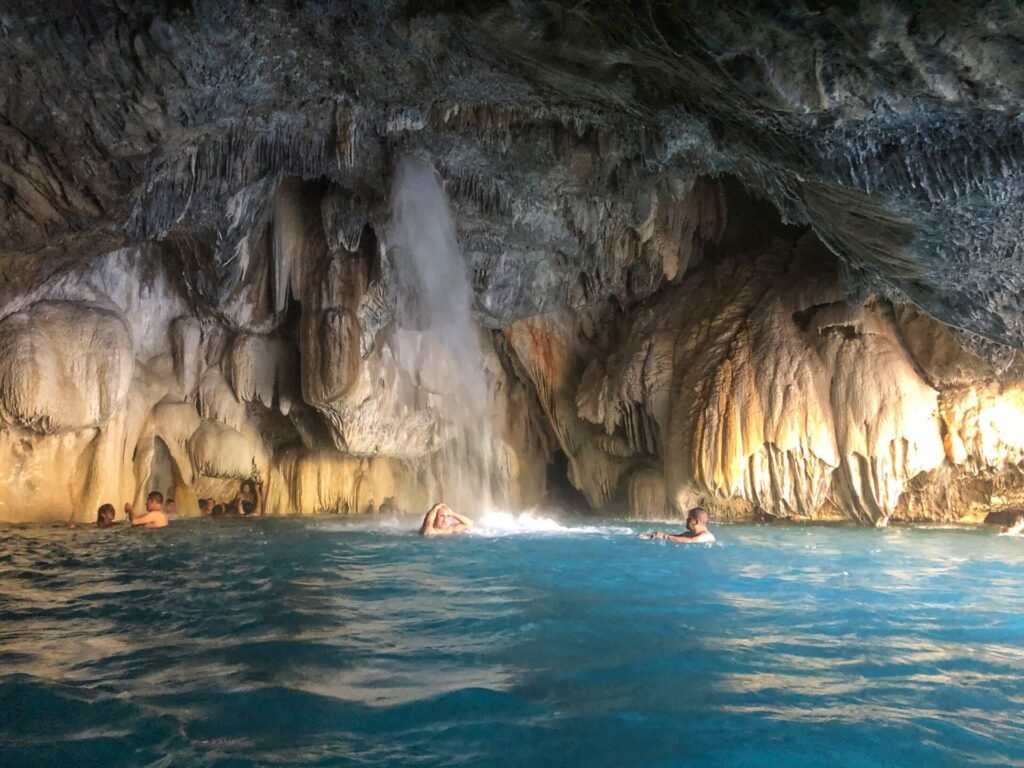
Fortunately, we waited about 10 minutes, and a massive group of about 40 people exited the cave, allowing us to slip in and bask in the hottest water of the day in relative tranquility….95 degree Fahrenheit water (35 Celsius).
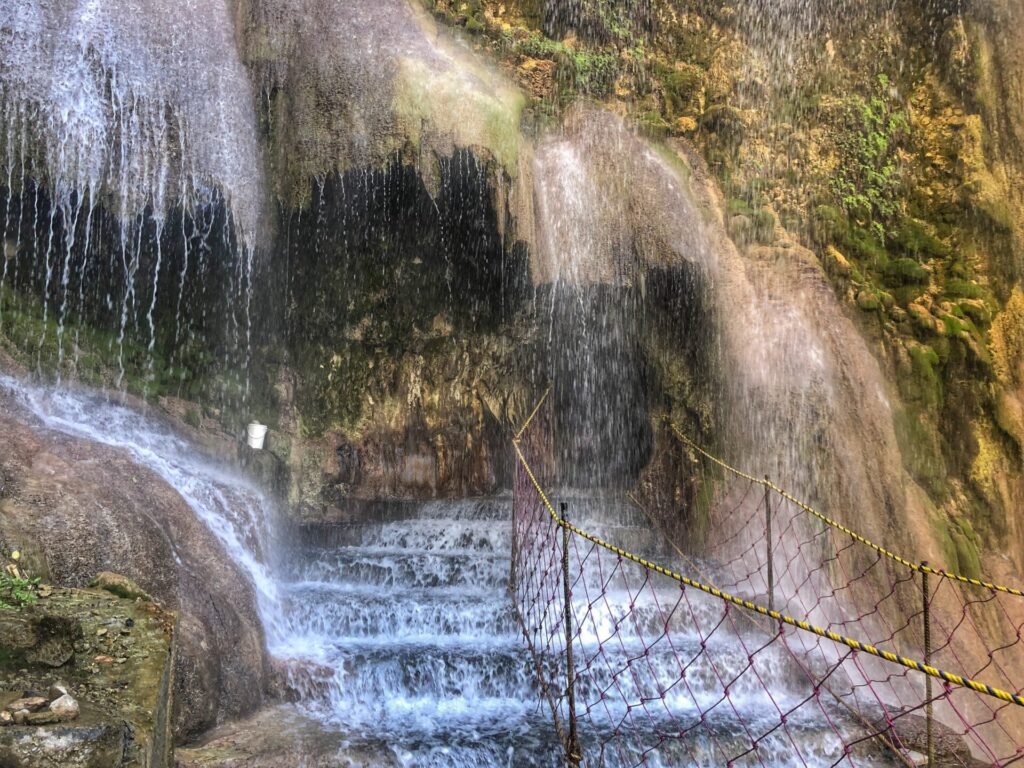
Next, we headed over to the 40-meter long tunnel that goes straight into the mountain. For this part, bring your shoes (which we had), and a water proof headlamp (which we didn’t.) This tunnel would have any US liability attorney foaming at the mouth, but it works in Mexico. Yes, it’s a bit treacherous. There’s no lights, water is drizzling on you the whole way, and you basically guide yourself through using the rope on the side wall, dropping in and out of lusciously warm pools, scaling and bouldering over rocks, and dodging mini waterfalls. In short, it’s insanely awesome. And, if we were 20 years younger and a bit more naive, we probably would have gone the whole way through, but our grown up sensibilities kicked in and we turned around half way. If only we carried water proof headlamps in our backpacks ?
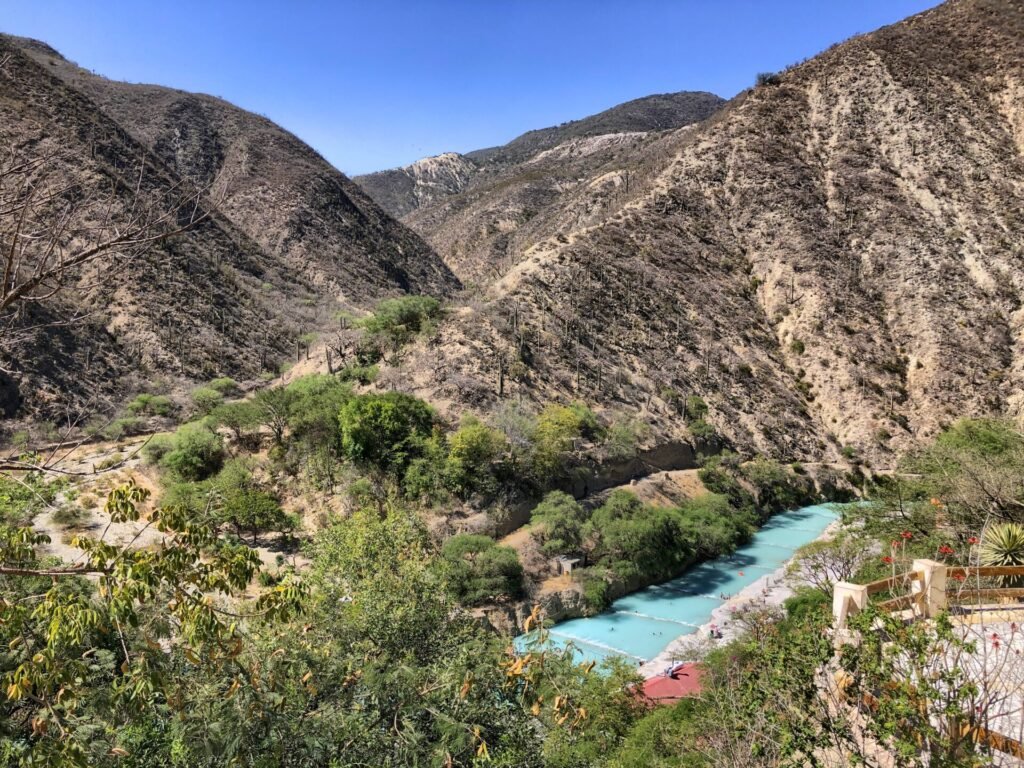
Checking out that stunning river one last time before we caught the 4:30 bus back to Ixmiquilpan.
Ixmiquilpan
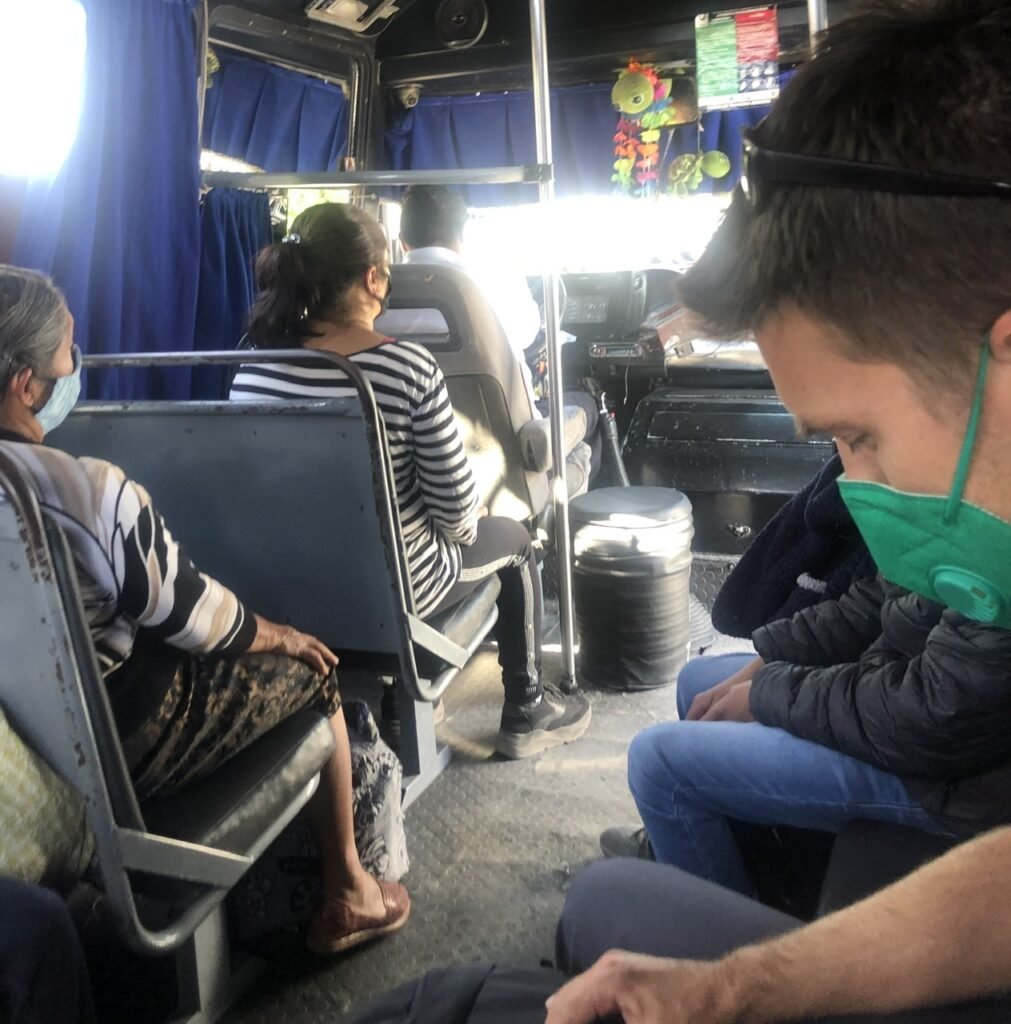
One of our favorite parts of travel is landing in unanticipated places. Ixmiquilpan was one of those, and we were glad to get the opportunity to stay there a couple nights when we decided to head Las Grutas Tolantongo. Ixmiquilpan is about three hours north of Mexico City and 2.5 hours east of Queretaro and is a normal Mexican town which wins points for: the most sprawling market small town market we’ve seen, the tranquil old growth tree-d river walk, the oldest pedestrian bridge in the Americas, and of course, easy access to Tolantongo.
The Queretaro bus dropped us off a couple miles west of town, so we hopped on a collectivo (mini bus) to make our way into the center of Ixmiquilpan. ($9 pesos or $.43/each.) We noticed immediately, this was the first place we’d been in Mexico where we were met with lots of curious gazes. Si, we were off the beaten path!

The bus dropped us off at Mercado Morales and in order to get to our Airbnb ($26/night), we had to weave our way through an endless and delightfully stocked market con mochilas (with backpacks.) That definitely didn’t stop the vendors from trying to sell us vegetables, cheese and everyone in between. Always fun…we were definitely a sight!

Templo y exconvento de San Miguel Arcángel, from the 1500’s, looks like a pink (salmon?) palace or fortress. Behind the town’s letters in the main plaza regally poses the original Diana the Huntress, an iconic sculpture tagged the “Independence Angel.” For nearly 65 years, the model who posed for it remained a mystery. However, at age 80, Helvia Martínez Verdayes admitted she modeled for it in 1942 at age 16. She hid it all those years as it was, of course, deemed scandalous. In an effort to convince her, Sculptor Juan Olaguibel bought her ice cream and she only took it all off when she saw his wife and children were present. http://banderasnews.com
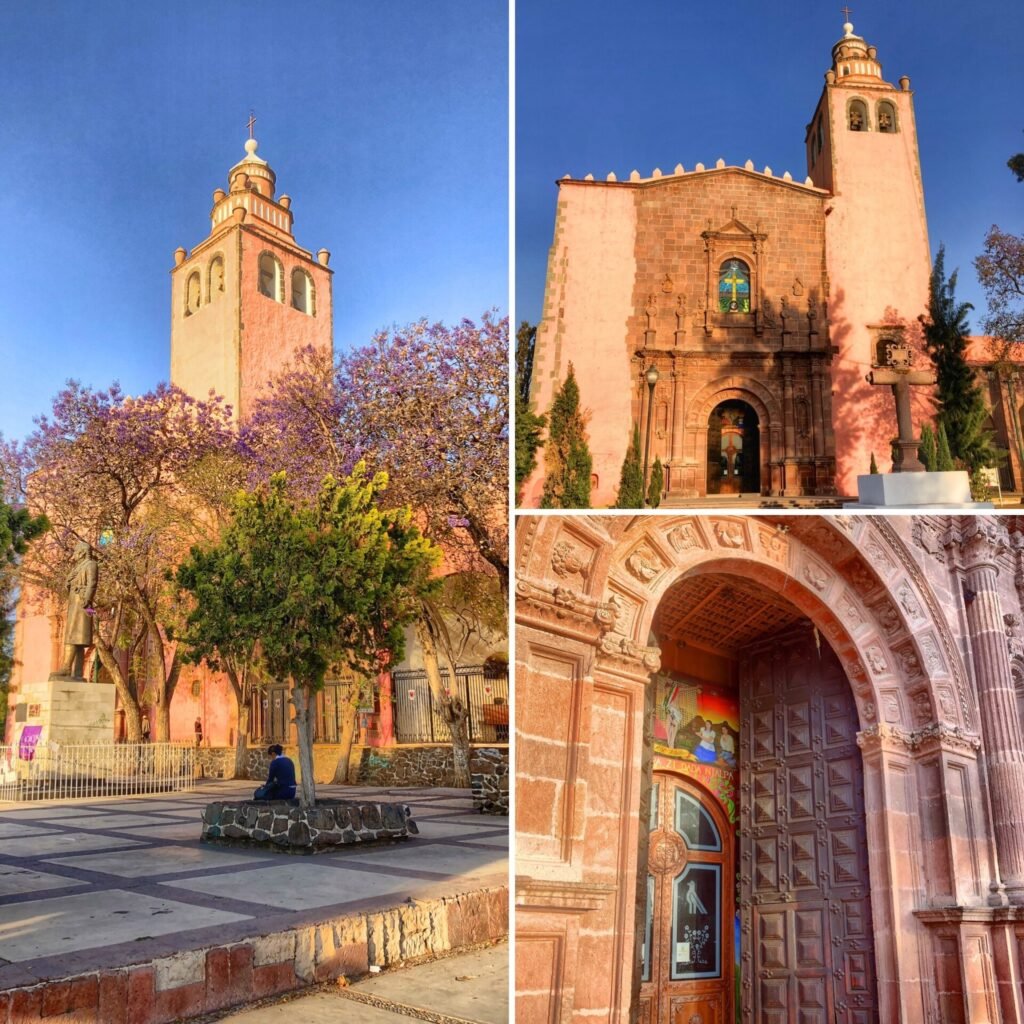
This church is inevitably the most striking and probably oldest in Ixmiquilpan from the 16th century. Built by the Augustinians.
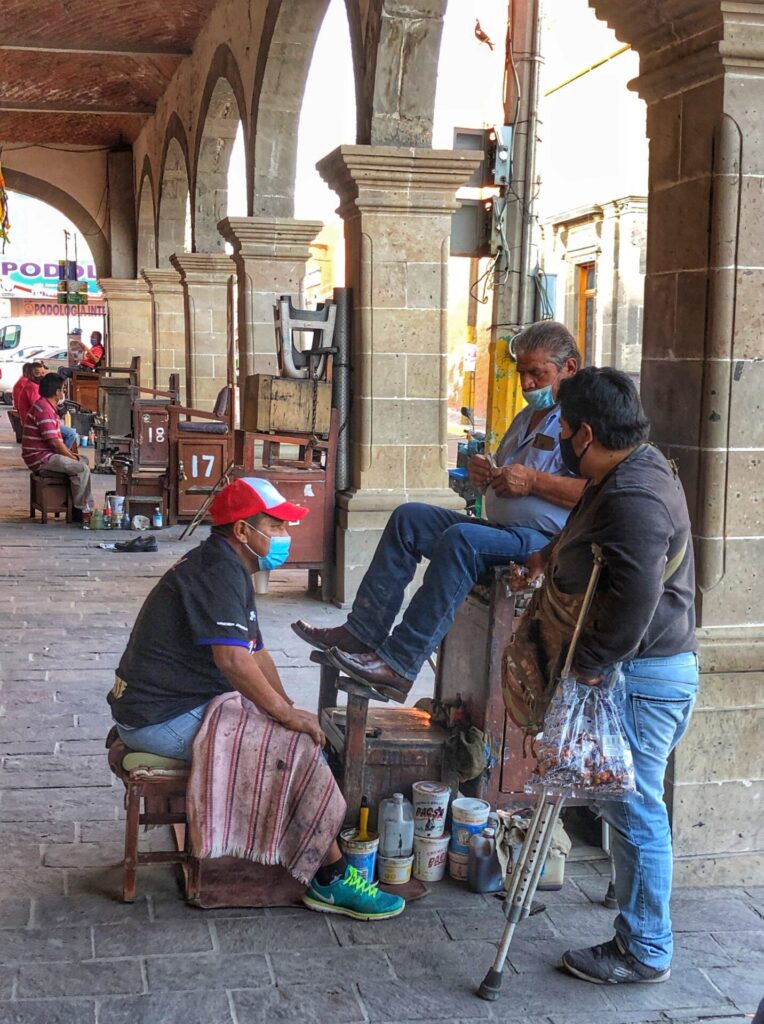
Locals having a chat at one of the many shoe shine stands.
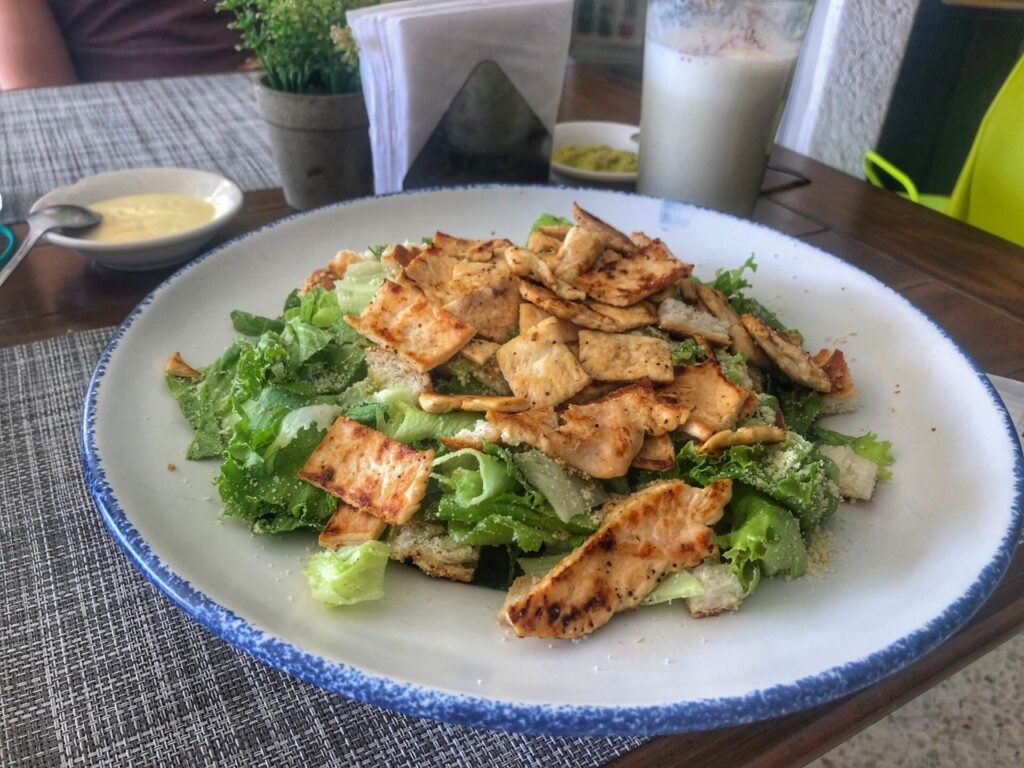
Believe it or not, after perhaps one too many gorditas and tacos, this was our first Caesar salad and it was absolutely delicious. And this massive salad cost, which would easily be $9 in the States cost …$60 pesos or $2.86.
People assume the Caesar salad was named after Julius Caesar or the Caesar family who ruled Rome and therefore the salad is Italian in origin. In fact, the Caesar salad was invented in Tijuana, Mexico by a man named by restauranteur Caesar Cardini, in 1924.
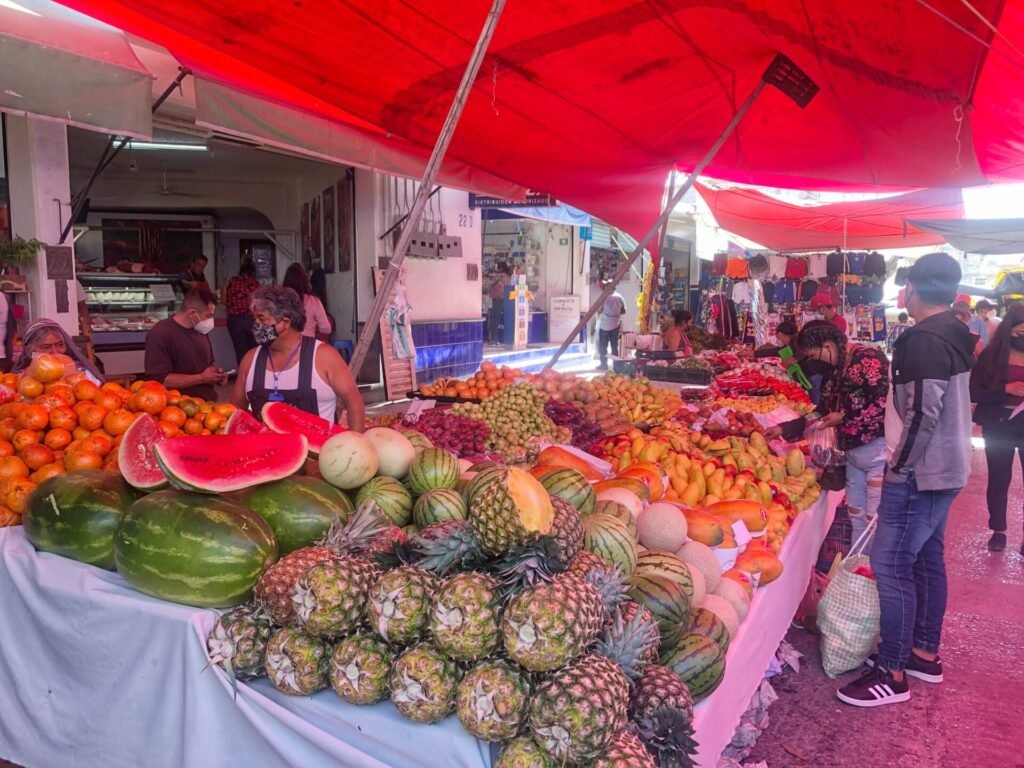
One of the many beautiful market stalls. As usual, a whole sack of produce was under $10.

The church of San Antonio. Across the street of this church is where you catch the shuttle to Tolantongo. A five-minute walk from our place.
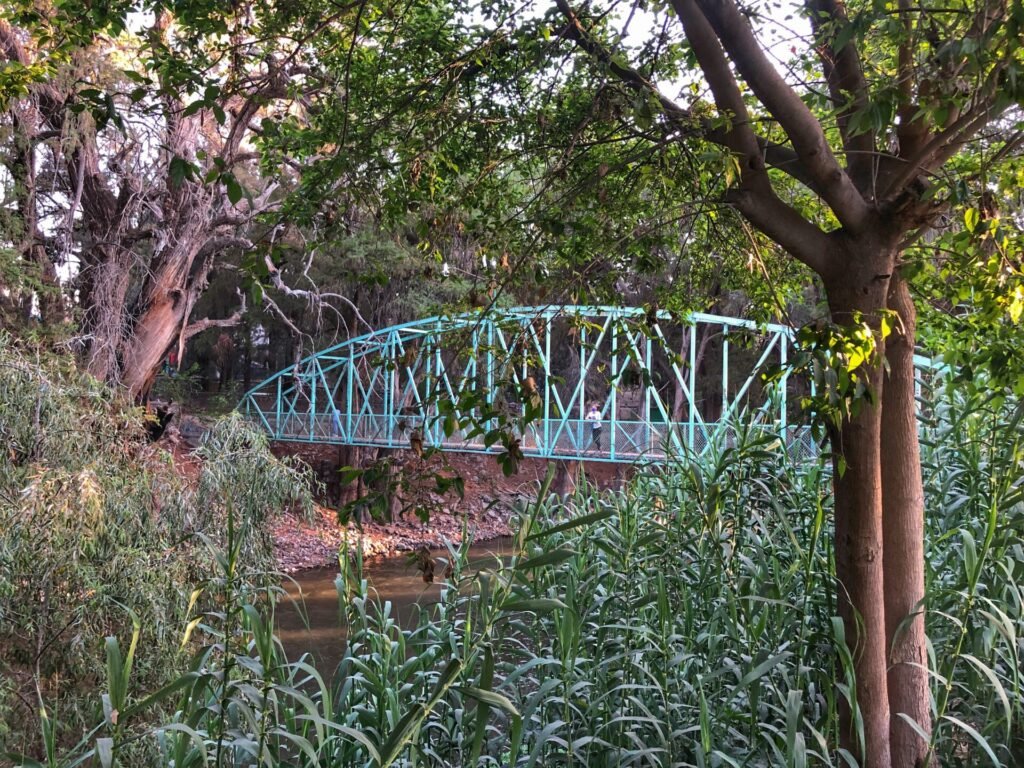
And, what a surprising gem…Taking a stroll down on the river walk by the Rio Tula and being delighted to find pedestrian foot bridges, gorgeous tufts of old-growth green resembling a little jungle, and decently-clean flowing waters.
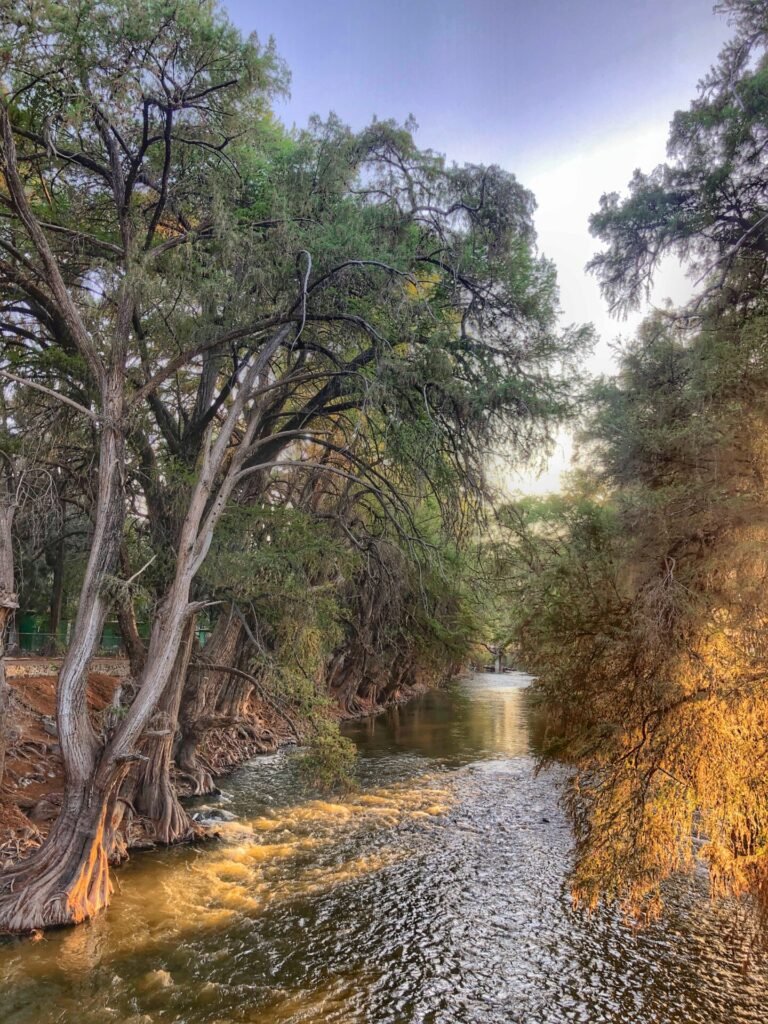
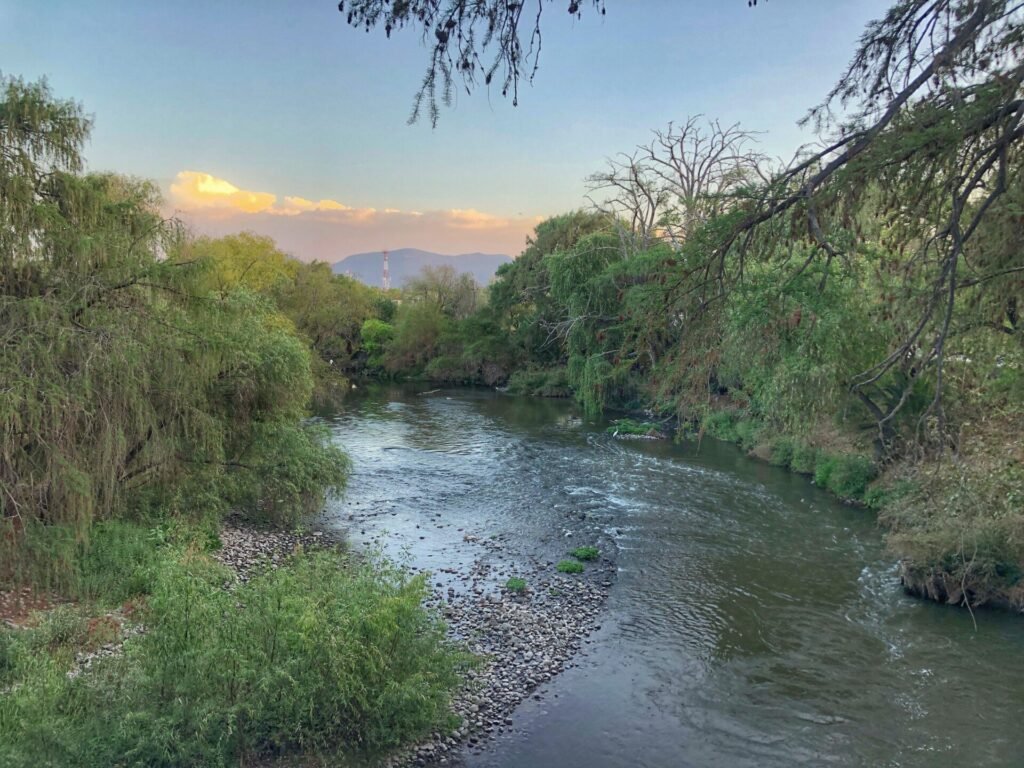
It’s the kind of water that makes you wanna toss in a kayak and go. This town has untapped tourism opportunity written all over it.
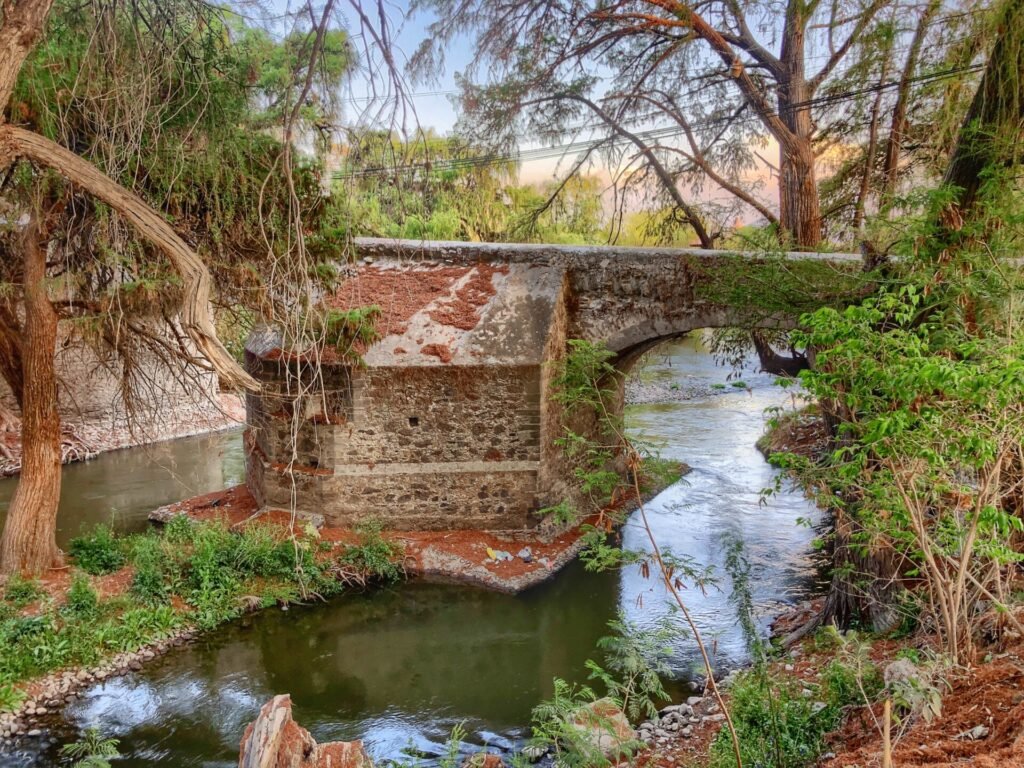
We were even more surprised to literally stumble on this monumental treasure…the San Miguel Archangel Bridge, which astonishingly considers itself the oldest bridge in the Americas, built in 1665. It was planned to facilitate pedestrian traffic and carts pulled by beasts over the Tula River. For bridge construction, Otomi (indigenous tribe) hands directed by European builders, knew how to combine aesthetics and stability. And sure enough, 350 it still stands proudly.

After exploring the town, we hoped to grab another Caesar salad but sadly all salad places seem to be considered lunch spots. We settled for super gigante tortas (sandwiches) for $40 pesos each ($2). We had a nice time chatting In Spanglish with the owner, who lived several years in Tampa cooking for a Lebanese restaurant. He wanted to start a Middle Eastern restaurant in Ixmiquilpan, but knew it was too risky for the local taco and gordita-loving crowd. Stuff like this only works in places like Mexico City, he said. We understand, but such a bummer because we’d love to have more healthy options in off-the-beaten-path Mexican towns.

